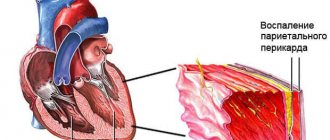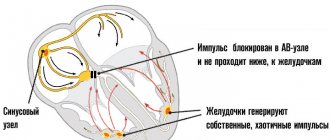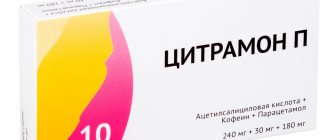Pediatric otorhinolaryngology is based on age and is quite diverse. At an early age, diseases occur that are not typical for adults, and vice versa. But there are pathological disorders that are characteristic of different age groups - these are acute conditions. The article will discuss only some of them, namely those that parents often encounter. The purpose of the article is to provide assistance at the pre-medical stage.
Bleeding from the nose in a child or epistaxis is the leakage of blood from the vascular structures of the mucous membrane. In 4% of cases, the quality of life deteriorates. More than half of the population experiences at least one episode of epistaxis. In 20% of children, nosebleeds (NB) of a recurrent type are recorded, and there are signs of chronic blood loss.
Causes that can cause nosebleeds
A child’s nose may bleed for several reasons (local, systemic or external):
- mechanical damage, injuries;
- presence of neoplasms;
- thinning of the mucosa (atrophic rhinitis);
- sinusitis and other infectious diseases;
- fragility of blood vessels;
- blood clotting disorder;
- increased blood pressure (stress, sunstroke, etc.);
- sudden changes in external pressure (on an airplane, in the mountains, etc.)
- vitamin deficiency (lack of vitamins C, K);
- low humidity and high room temperature.
As a rule, single nasal blood loss is not a symptom of serious pathologies, but rather the result of trauma to the nose. However, if the child’s blood loss is repeated many times, is difficult to eliminate and is not associated with injury, parents should urgently seek qualified help from a medical institution.
Possible complications
If a child has bleeding from the nose, then ignoring this condition is unacceptable, because it is fraught with the development of the following complications:
- Hemorrhagic shock (hypovolemia). It develops when there is a small volume of circulating blood in the body. This is accompanied by the development of chronic hypoxia. Oxygen starvation leads to functional failure of systems and organs, and is also fraught with the development of irreversible changes.
- Degenerative changes in the mucosa. Drying of the mucous membrane leads to its thinning.
- Anemia. Frequent NK lead to blood loss, which is accompanied by frequent infectious diseases, lethargy and a decrease in the body's protective functions.
It is impossible to visually assess the level of blood loss in the posterior type of nosebleed. That is why you should consult a doctor for a comprehensive diagnosis to eliminate the possibility of complications.
What types of bleeding are there?
Note that blood can come from the nose in drops, or maybe in a continuous stream. It is this sign that indicates the location of the vessels and the degree of danger. The vessels involved in blood loss can be located both in the anterior and posterior regions of the nasal cavity. In this regard, nosebleeds are divided into two types:
- Front. It occurs due to a violation of the integrity of small blood vessels located in the nasal septum and does not pose a serious danger to the child’s health. It is quite possible to stop it on your own.
- Rear. It assumes the most intense blood loss, which is caused by disruption of large vessels in the posterior parts of the nose, and this is why it is dangerous. The blood does not flow out of the nose, but flows down the throat. In this case, pinching your nose is useless; medical help is required.
Massive blood loss can be indicated by general weakness and pallor of the skin, low blood pressure and disorientation.
Thus, with severe bleeding, damage to large vessels can be assumed. Such bleeding cannot be stopped on its own; urgent medical attention is required.
Symptoms
Epistaxis develops against the background of general well-being. Possible previous symptoms include itching in the sinuses, headaches or dizziness. Blood flows into the nasopharynx along the back wall of the larynx or flows out.
Associated symptoms with blood loss:
- flashing “flies” before the eyes;
- dizziness;
- pale skin;
- ringing and noise in the ears;
- general malaise;
- strong thirst;
- cardiopalmus.
Next, there is a decrease in blood pressure (BP). Characteristic shortness of breath appears, consciousness is impaired and fainting is possible. Vomiting blood also indicates the presence of a posterior type of nosebleed (when blood flows into the throat and is then swallowed).
Diagnosis and methods of treating pathology
In the process of examining the child and interviewing the parent, the doctor needs to obtain as much information as possible about the causes of frequent blood loss. In this regard, he is interested in answers to the following questions:
- What was the obvious cause of the bleeding: injury, illness, or blowing your nose?
- How often do blood losses occur and how were they stopped?
- What medications is the patient taking? Do they include drugs that prevent blood clotting?
- What diseases does the child (parents, relatives) suffer from?
The doctor examines the child's skin for bruises and small capillaries, confirming the fragility of the blood vessels. Additionally, the child may be prescribed the following examinations:
- general blood and urine tests;
- coagulogram;
- electrocardiography;
- X-ray of the sinuses;
- computed tomography (CT).
The doctor's first task is to stop blood loss. To do this, a specialist can use conservative methods, such as:
- anterior (posterior) tamponade;
- taking hemostatic drugs.
If this method is ineffective, surgical procedures are used that involve cauterization of bleeding vessels:
- using electric current (electrocoagulation);
- liquid nitrogen (cryocoagulation);
- high frequency radio waves;
- a narrow laser beam.
After the bleeding stops, the causes are identified and work is done to eliminate them. If there are pathologies in the form of a deviated nasal septum, surgery to correct it is indicated. If there is an obvious infectious component, antibacterial therapy, etc. is prescribed.
Nosebleeds in a child (Epistaxis)
First aid
Children with incessant bleeding, deterioration of condition, evidence of trauma, or aggravated somatic anamnesis require inpatient treatment. The primary actions to stop bleeding in a child are carried out at the prehospital stage:
- Giving the correct position
. The child should be seated so that the head is higher than the body, slightly tilted forward. The blood should drain into the tray. It is necessary to explain the principles of proper breathing: deep breaths through the nose, exhales through the mouth. Blowing your nose during NK is unacceptable. - Carrying out hemostatic measures
. Cold is applied to the back of the nose, and the nasal passage is pinched with a finger for 5-10 minutes. If ineffective, a cotton swab moistened with a 3% solution of hydrogen peroxide or children's vasoconstrictor nasal drops is placed in the vestibule of the nose. The tampon can be replaced with a hemostatic sponge.
Lack of effect from basic care within 20 minutes is an indication for hospitalization in the ENT department of the hospital. The child is transported in a sitting position or lying on his stomach. During transport, the above procedures continue.
Nasal tamponade
The final stop of nosebleeds in the hospital involves tamponade. Anterior tamponade is the introduction of a sterile gauze turunda through the anterior nasal passage. Turunda is pre-wetted with a hemostatic solution. After local anesthesia, a gauze swab 70 cm long and 1 cm wide is inserted into the nasal cavity. The swab is placed like an accordion, tightly filling the required half of the nose.
If the method is ineffective, posterior tamponade is performed. A cotton-gauze swab is prepared from sterile material, stitched in the form of a bale, the size of which is conditionally equal to the size of the nail phalanx of the child’s thumb. A thin catheter is passed through the nasal passage into the oral cavity. The threads of the tampon are tied to the inner end of the catheter, the outer part is pulled outward until the tampon tightly covers the nasal choanae. The duration of standing of the turunda reaches 2-5 days.
Surgery
Surgical intervention is indicated if packing is ineffective and with recurrent nosebleeds. When accurately identifying a bleeding vessel, endoscopic electrocoagulation is performed. If there is bleeding from the Kisselbach area, the mucous membrane is detached, followed by the installation of a tampon.
A surgical method for stopping severe nosebleeds from the ethmoidal arteries is transmaxillary tamponade of the ethmoidal labyrinth. In case of persistent bleeding from the external carotid artery, clipping of the maxillary artery or carotid embolization is performed.
How to stop bleeding: recommendations for parents
To begin with, the child should not lie down or tilt his head back, as blood may enter the lower respiratory tract or cause vomiting. Also, you should not put any tampons in your nose.
- The child needs to be seated and his head slightly tilted down, gently pinch the nostril for 3-5 minutes so that a blood clot forms and closes the injured vessel.
- If the blood continues to flow, repeat the procedure again.
- If possible, you can apply an ice pack or a handkerchief moistened with cold water to the bridge of the nose.
We draw the attention of parents: if the bleeding does not stop within 15-20 minutes, it is necessary to call an ambulance.
Diagnostics
To find out why a child has nosebleeds, a comprehensive examination is prescribed:
- coagulogram;
- visual examination of the nasal cavity;
- hemostasis study;
- detailed blood test;
- checking capillaries for mechanical stability;
- collecting anamnesis to determine the cause of NK.
Differential diagnosis is required. The doctor determines the bleeding area: lungs, stomach or nasal cavity (symptoms are similar). In the first case, the blood is scarlet, in the second it is foamy, in the third it is brown and does not flow down the back wall of the throat.
Preventive actions
Following simple recommendations by parents will help eliminate unpleasant moments associated with blood loss:
- Trim your child’s fingernails regularly to prevent injury to his nose;
- moisturize the nasal mucosa using saline solutions or special ointments;
- maintain optimal humidity in the room, use a humidifier;
- treat colds in a timely manner; do not blow your nose too often or too much during treatment;
- do not overuse vasoconstrictor drugs to prevent thinning of the mucosa.
We remind Kaliningrad residents that you can make an appointment with an otolaryngologist by making a preliminary application by filling out an online form, or by calling one of our clinics at the phone numbers listed on the website.
Prevention
Parents are able to prevent the development of epistaxis. Preventive measures for nosebleeds in children include adequate nasal hygiene, organization of a favorable indoor microclimate and timely treatment of hemostasis disorders.
For treatment of nosebleeds, contact the RebenOK clinic. Patients are treated by certified ENT doctors with extensive practical experience. The clinic is equipped with expert class equipment. The instruments and technical means used are designed for pediatric patients.
Treatment
Any health problems frighten children.
As a result of excitement, the heartbeat increases and blood begins to flow faster. Helping in this case will be more difficult. An adult's reaction should be immediate. First of all, everyone needs to calm down. Explain to your child that everything is fine and you can easily correct the situation. Don't panic, he will sense your condition and all your words will be in vain. Wherever you are, on a walk, at home, at a party, take all measures to stop the bleeding. A simple algorithm of actions:
- Distract your child with toys, cartoons, and conversations. Any means will do.
- Sit opposite and show how to breathe correctly. Calm, deep breaths in and out will help calm your heartbeat and slow down bleeding.
- Place your baby upright. Make sure your head doesn't fall back. Better tilt it forward. This will allow the blood to flow out and not enter the throat.
- Fresh air will help restore strength. Open a window, if possible, loosen a tight collar or remove outer clothing.
- You can narrow blood vessels at home as follows. Place a warm heating pad on your feet and a cold towel with ice on the bridge of your nose.
- You can stop a slight flow of blood if you press the wings of your nose against the septum. A cold compress won't hurt here either.
- Place a folded handkerchief, gauze or cotton wool soaked in hydrogen peroxide into the anterior nasal area. Hold for fifteen minutes. If the child is big enough, he can do it himself.
- If only one nostril is injured, ask your baby to inhale through the other and exhale through the mouth. This manipulation improves blood clotting.
- Within an hour after treatment, do not feed the child or give him warm drinks. This increases the pressure and can provoke a repeat of the situation.
- If the methods listed above do not help, call an ambulance or go yourself to the nearest hospital.
Give your child some rest for a while. Don't let him run, play active games and, of course, stick his fingers and various objects in his nose.
Which doctor should I contact?
If bleeding is frequent, heavy, and difficult to stop, make an appointment with an otolaryngologist. He will assess the condition of the blood vessels. If necessary, he will schedule a consultation with a therapist and cardiologist to rule out VSD, hypertension, and other pathologies. In the medical field I accept otolaryngologists of the highest category. In one place you will be able to see the necessary specialists and take the necessary tests. The clinic also has a pediatric ENT doctor. It is possible to solve the problem of recurring bleeding in one or two doses.










